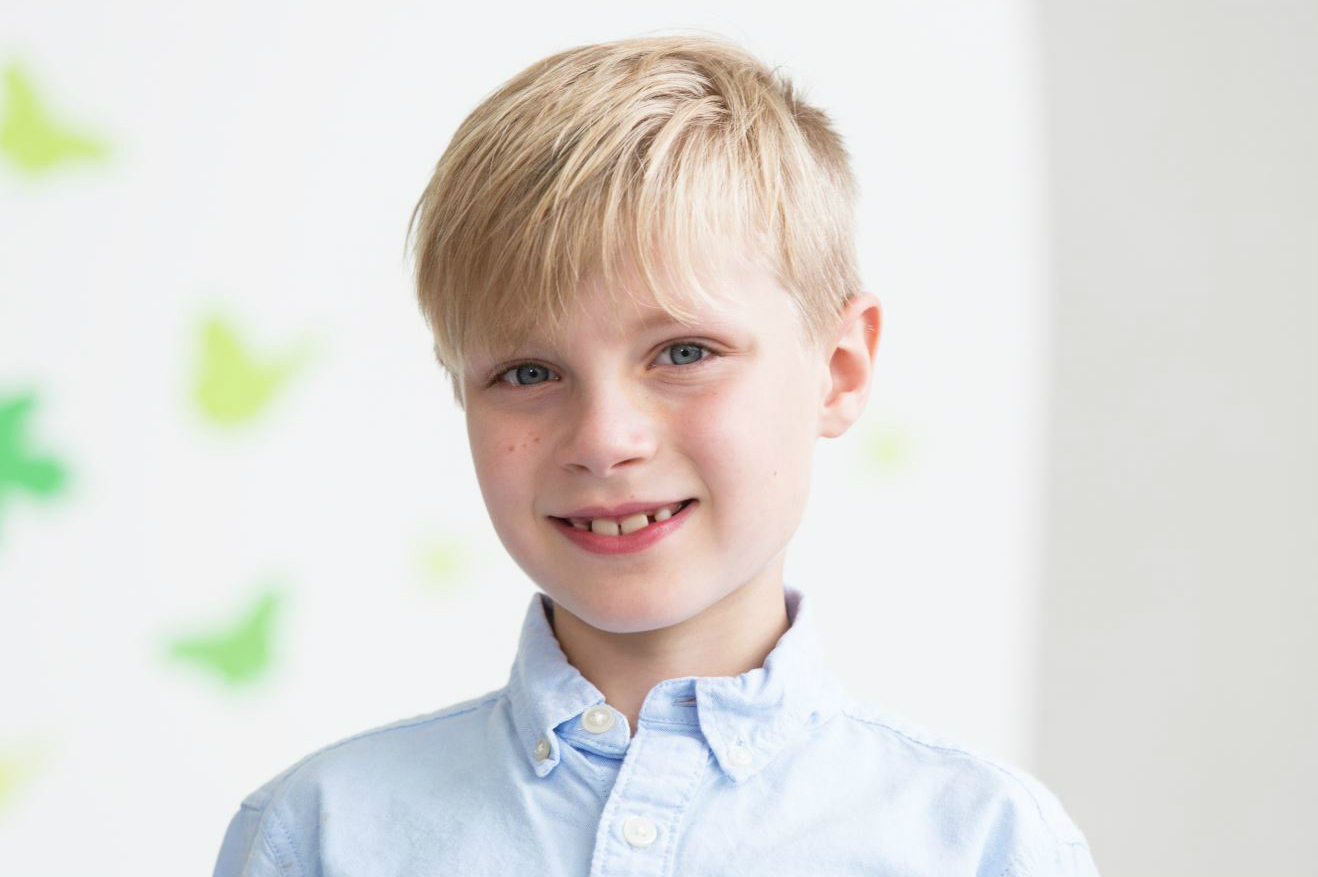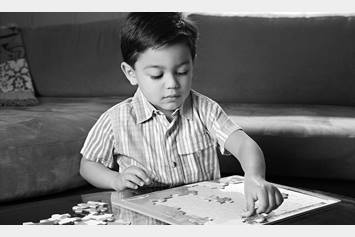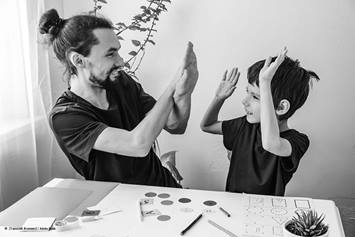Autism Spectrum Disorder
Autism Spectrum Disorder (ASD) refers to a complex neurodevelopmental disorder that impacts a child’s ability to communicate and interact socially. It also impacts the way the child thinks and behaves.
What Is Autism Spectrum Disorder (ASD)?
The term Autism Spectrum Disorder (ASD) refers to a complex neurodevelopmental condition. Its presentation varies for each individual, but primarily, it affects communication and social interactions between a child and their caregivers, peers, and/or teachers. It also impacts the way the child thinks and behaves. It can cause them to play, behave, and think in repetitive or unconventional ways.
ASD is usually diagnosed in early childhood and can have effects throughout life. Current research indicates ASD is identified three times more often in boys than girls, but further work is needed to understand this gender difference.
The main characteristics of Autism Spectrum Disorder fall into two categories:
- Challenges navigating our social environment:: Children with ASD show differences initiating or responding to social interactions. Children may seek connection with others without using eye contact or engaging in physical interactions. Conversations and play may be challenging for some or revolve around topics of high interest. Nonverbal communication (e.g., gestures, facial expressions), subtle social rules, and abstract language may be hard to understand. They may find developing and maintaining relationships to be challenging or stressful.
- Repetitive movements, behaviors, or interests: Children with ASD often show repetitive patterns of behavior, such as hand flapping or repeating certain sounds or phrases. They may be highly interested in certain topics, making it hard to engage in other activities. They may like routines and become distressed when that routine is disturbed. They may be over- or under-reactive to sensory experiences.
The level of support needed can vary widely. Some children and adults with ASD can perform all the normal activities of daily life. Others require substantial support systems throughout their lives. Caregivers, providers, and community members may need to develop individualized supports and environmental adaptations that increase inclusion opportunities and best allow the person with ASD to thrive.
How Do I Know if My Child May Have Autism Spectrum Disorder?
The onset of Autism Spectrum Disorder can vary across children. Sometimes signs of ASD can show up as early as infancy. Other times, children may appear to be developing as expected through their second or third year, then their development slows and signs of ASD become clearer. There may be a regression in their verbal skills and their ability to relate to others. Sometimes the signs of ASD are subtle and not apparent until later in childhood. The signs of ASD are broad and each child will show a different combination of signs.
The signs of ASD you may see in a toddler include:
- Limited babbling or pointing by 12 months
- No single words by age 16 months or no two-word phrases by age two
- No response to hearing their name by 12 months
- Loss of acquired language or social skills
- Limited eye contact
- Limited smiling or response to others
- Limited pointing, showing, or bringing objects to share their interest with others
The signs you may see in a child or adolescent with ASD include:
Social Communication
- Language differences, ranging from a complete lack of speech to delayed language development
- Limited understanding of other’s speech, including abstract expressions like slang or humor
- Limited understanding or use of simple gestures, body language, tone of voice, or other nonverbal cues (such as not understanding what it means when someone is pointing toward an object or facial cues)
- Use of echolalia (precise repetition, or echoing, of words and sounds)
- Use of honest and direct language
- Better communication with adults than peers
Social Interaction
- Social difficulties range from limited interest in peers to simply having difficulty responding to subtle social cues
- Limited eye contact
- Limited shared social play or imaginative play
- Difficulty in understanding others’ feelings or being able to talk about their own
- Difficulty in developing and navigating relationships
Behavioral Patterns (Behaviors, Routines, Interests, Activities)
- Repetitive movements, like flapping arms or rocking from side to side
- Repetitive use of objects, like spinning wheels on a toy truck or lining up toys
- Repetitive language, such as persistent questioning or other repetitive statements or sounds
- Intense and persistent interest in a topic or activity
- Highly focused when engaged in topic of interest
- Prefer routines or rituals and can be upset by changes
- Rigid or repetitive thinking patterns
- Sensitive to or seeking sensory input, such as sounds, sights, textures, or smells
- Limited range of preferred foods
What Causes Autism Spectrum Disorder?
We simply don’t know. Current research suggests that there are genetic factors at work that change a child’s developmental patterns. There is no evidence that ASD is caused by poor parenting or by vaccines.
How Is ASD Diagnosed?
There is no medical test for Autism Spectrum Disorder. Diagnosis of ASD starts by assessing a child’s behavior and development in comparison to children of the same age.
It takes a multidisciplinary team of healthcare professionals with experience in ASD and childhood disorders to conduct a diagnostic evaluation. Through interviewing the parents about the child’s development, asking the child about their experiences, observing the child, and conducting psychological and language testing, the team can confirm that an ASD diagnosis is appropriate and not some other physical, developmental, or mental health condition.
Children can usually begin to be diagnosed for ASD by the age of two.
How Is ASD Treated?
A combination of behavioral intervention and other therapies (e.g., speech and occupational therapy) can improve a child’s language development, social skills, fine motor skills, executive functioning, and emotional/behavioral regulation. Applied Behavior Analysis (ABA) is the most evidence-based method for supporting children with ASD. Beginning these interventions early can help increase the benefits. Some youth with ASD may benefit from psychotherapy services to assist with mental health concerns. All interventions should be individualized to the child’s profile and include family preferences.
The outcomes of intervention can vary. Most children gain skills and have an improved quality of life. Some children who have received ABA treatment can make quite significant gains in their development, so that services may be faded. Some adults with ASD can live independently, fully integrating into their community. Others will require a life-long supportive environment or need help intermittently as stressors increase.
When Should a Parent Seek Help?
The earlier Autism Spectrum Disorder is identified, and intervention begins, the better the results. With early and intensive treatment, children diagnosed with ASD can increase the opportunity to live more independently as they mature into adults. Also, the sooner caregivers understand their child’s diagnosis and its impacts, the better they can support their child and adapt the environment to meet the child’s needs.
Contact your family physician or pediatrician if you have concerns about your child’s communication, social, or behavioral development. If you are seeking a diagnostic assessment or are ready to begin treatment, contact Behavioral Health Intake at Nationwide Children’s Hospital. If you are seeking information or resources, contact our Autism Resource Clinicians at the Center for Autism Spectrum Disorders.




